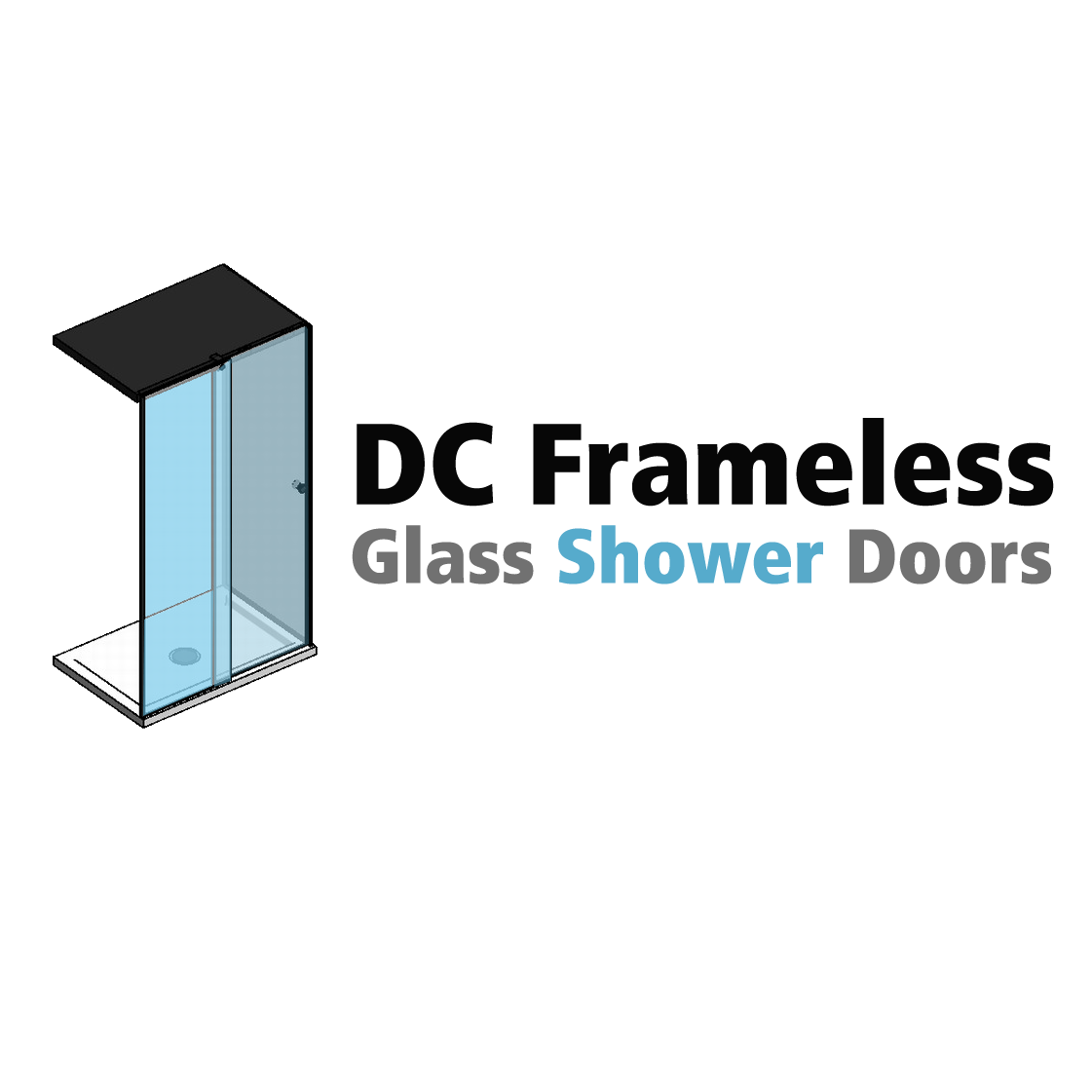Upgrading from a clingy curtain to sleek glass is one of the quickest ways to modernize any bathroom—whether you’re in a historic row home in Adams Morgan, a condo near The Wharf, or a high-rise by Union Market. Below, our DC-based shower-door team explains every mainstream choice— from framed sliders to full steam enclosures—then gives realistic cost ranges so you can budget before saying, “Alexa, book my install.”
Framed and Frameless: The Starting Point
First, decide whether you want framed or frameless glass.
Framed shower doors use a metal perimeter to stabilize thinner glass. They’re the most budget-friendly and often run between seven-hundred and twelve-hundred dollars installed in Washington, DC. If you’re remodeling on a tight budget in Anacostia or Congress Heights, a framed unit gets the job done without draining your wallet.
Frameless shower doors rely on minimal clips and thicker glass. That glass-first, hardware-second look is popular in luxury condos in Logan Circle, Shaw, or the Southwest Waterfront. Expect a starting price around fourteen-hundred dollars, climbing to the high-two-thousands if you add premium hinges or low-iron glass.
Door Operations You Can Choose
Your layout drives the door style. Hinged, or “pivot,” shower doors work in bathrooms that have at least thirty inches of clear swing space—perfect for larger master suites in Georgetown brownstones. For narrow row-house baths in NoMa, sliding doors make more sense. They glide on tracks and need no floor clearance; price tags generally run from eight-hundred fifty to fifteen-hundred dollars depending on whether they’re framed, semi-frameless, or full frameless. Corner lofts and small studio conversions sometimes call for round doors; curved glass kits usually start around eighteen-hundred dollars and rise with custom finishes.
Full Shower Enclosures and Steam Units
If you’re dreaming of a spa vibe, think beyond a single door. Frameless walk-in screens feature just one fixed panel and a stylish opening; they begin near eleven-hundred dollars for basic clear glass. Want steam? A ceiling-height, fully gasketed frameless steam enclosure can start near three-grand and move well beyond five-grand, especially in new construction near Howard University or Foggy Bottom where builders integrate LED lighting and Bluetooth speakers.
Glass Types, Colors, and Textures
Clear glass is standard, but plenty of homeowners want more personality. Frosted glass adds privacy without sacrificing light and raises the price about ten percent. Rain glass offers a spa-like ripple that hides water spots at a similar surcharge. If you crave a warm tint for a mid-century vibe, bronze or grey glass runs about twelve percent over clear. Designers building high-contrast black-and-white bathrooms in Shaw often choose low-iron or “HD” glass; because it removes the green edge typical of standard glass, expect a fifteen-percent premium. The most dramatic option—hammered or ice-textured panels—adds around twenty percent yet provides unbeatable visual impact.
What Your Budget Might Look Like
Replacing a curtain with a basic framed slider could land around eight-hundred fifty dollars installed, including measuring, delivery, and standard hardware. A single frameless swing door with polished chrome hinges often totals between fourteen-hundred and eighteen-hundred dollars, depending on glass thickness. A mid-range neo-angle enclosure—popular in row-house master baths from H Street to Columbia Heights—often hits the two-thousand-dollar mark. At the high end, a four-sided steam unit with low-iron glass, ceiling transom, and upgraded hardware can top five-thousand dollars. Tile work, niche cutouts, and décor-matched handles add extra cost, so ask for a line-item proposal.
Hidden Costs and Smart Savings
Remember demolition: removing old curtains, rods, or a framed tub door can run seventy-five to one-hundred fifty dollars. Out-of-plumb walls, common in older NW DC row homes, may need shimming or notched glass edges—budget fifty dollars per side. DC permits are usually minimal for shower glass but can climb past a hundred dollars if you alter plumbing lines. One way to save is bundling: combine a new glass mirror, custom shelving, or a matching glass wall during the same visit to cut per-trip fees.
Maintenance Realities
Framed sliders have bottom tracks that collect soap scum, so plan on weekly cleaning. Frameless panels eliminate most metal and require just a daily squeegee. Upgrade to a nano-sealant coating—about a hundred dollars—to reduce spotting by roughly seventy-five percent. Finally, inspect silicone joints each year; DC’s humidity can loosen seals, especially in basement baths in NE DC.
Picking the Right DC Glass Pro
Check online reviews; look for at least a 4-star average when you search “glass shower doors DC.” Ask if the company uses laser measuring to ensure tight fits in old walls that bow or bulge—common in historic SW DC homes. Verify they install OEM hardware; brass pivots or soft-close sliders last longer than bargain knock-offs. And choose a contractor ready for voice-search bookings. If you can say, “Hey Google, track my shower door order,” you’ve found a modern operation.
Voice-Search FAQs
• “Hey Google, what’s cheaper—framed or frameless shower doors in DC?”
Framed runs roughly thirty to forty percent less.
• “Alexa, can I get sliding doors in rain glass?”
Yes; plan on about a ten-percent premium.
• “Siri, who installs shower enclosures near Columbia Heights?”
We do! Schedule a free measure in forty-eight hours.
Final Takeaway
Covering your shower in Washington, DC can be as affordable as eight-hundred fifty dollars for a framed slider or as luxurious as five-thousand for a steam enclosure overlooking the Southwest Waterfront. Decide on layout—pivot, sliding, or full enclosure—then pick your glass: clear, frosted, or high-end low-iron. Partner with a top-rated shower-door company that serves every quadrant, from NW to SE, and accepts voice-search appointments. Do that, and your bath upgrade is just one “Hey Google” away.
